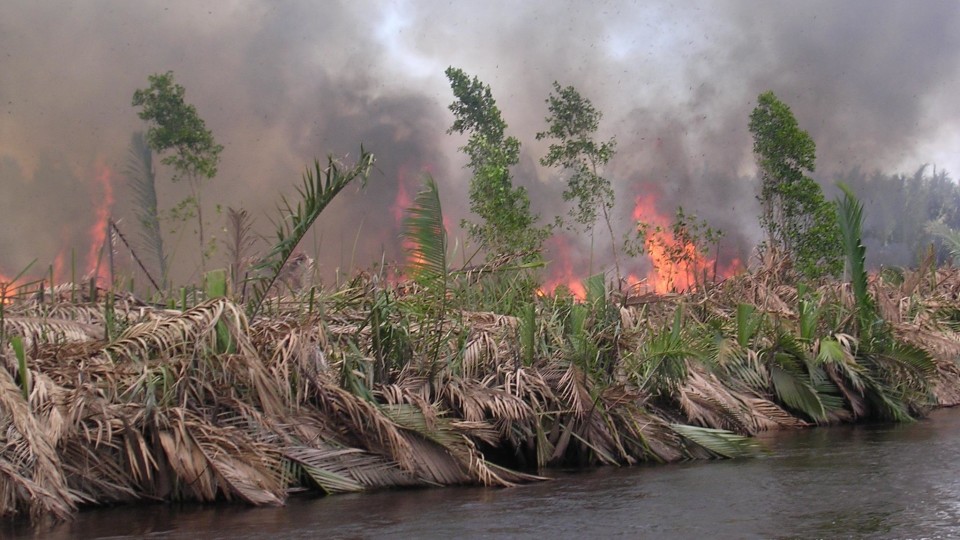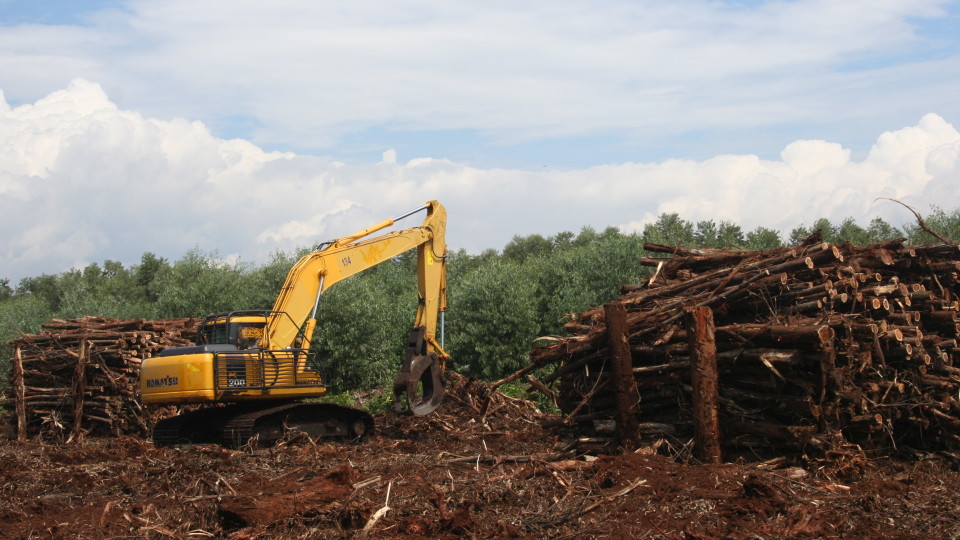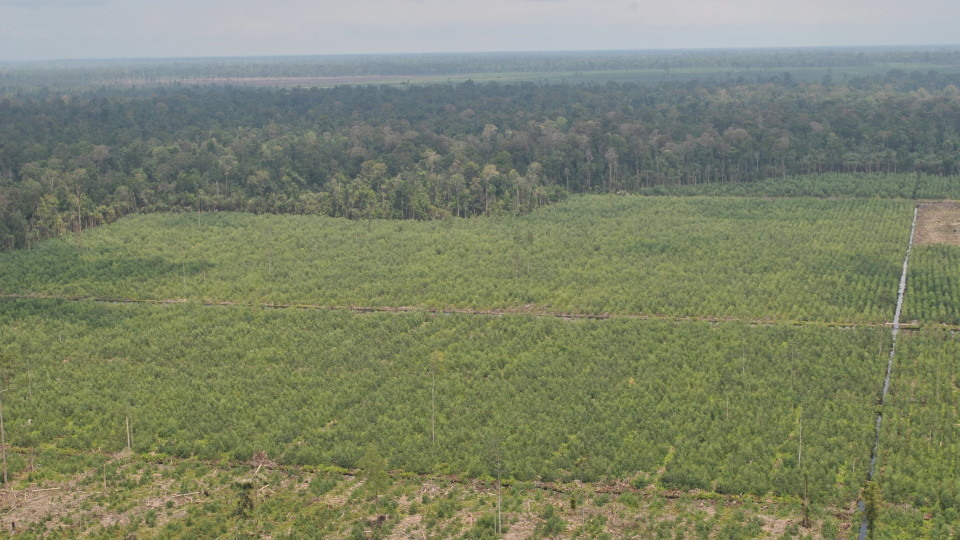
A new paper rejects claims that drainage of peatlands for plantations can be sustainable
-
Climate mitigation and adaptation
-
Peatland conservation and restoration
In 2015 Indonesia was hit by a disastrous haze event caused by extensive peatland fires in Sumatra and Kalimantan. In response, the Indonesian government launched a national Peatland Restoration Agency (BRG) with an ambitious target of restoring over 2 million hectares of peatlands by 2020. Success will depend on a proper understanding of the functioning of peatlands. A new policy brief by Wetlands International and Tropenbos International calls for a thorough science-based approach, instead of some of the currently widely applied policies and management models, which have insufficiently considered the issue of peatland subsidence.

While the Indonesian government is currently taking bold steps towards large scale peatland restoration to prevent major fires, including rewetting of priority peatland areas, some key players in the pulp for paper and other plantation industry claim that peatlands can be drained sustainably and thus contribute to the government’s goals. However, a policy brief published today by Wetlands International and Tropenbos International contradicts these claims. It calls for phasing out of drainage-based land-use on peat in Indonesia, and to develop alternative land-uses, involving the rewetting of peatlands.
Peat consists of 90% water and 10% organic material that is mostly carbon. Continuously high water tables have prevented the breakdown of organic material and allowed thick layers of peat to build up over centuries, in many areas in Indonesia. Millions of hectares of peatland in Sumatra and Kalimantan have been drained in order to allow for the development of oil palm and industrial tree plantations. Drainage of peatlands has at least three important consequences with major social and economic effects. First, when drained, the peat oxidizes and carbon is continuously released into the atmosphere as CO2, contributing to climate change. Second, drained peatlands are extremely fire prone, and fires have repeatedly destroyed millions of hectares. Last year, peatland fires destroyed several million hectares, and the haze associated with these fires had devastating impact on the economy of SE Asia and on public health. Lastly, the loss of peat due to oxidation results in subsidence of the peatland which brings the land surface down to sea or river level and eventually leads to frequent or even permanent flooding. Most of the lowland peatlands of Sumatra and Kalimantan have been affected by drainage, and continuation of such drainage-based land-uses – including pulp-for-paper and oil palm plantations in these areas will thus in the long term lead to frequent and prolonged floods during the wet season in many millions of hectares, resulting in the loss of vast areas of productive land. Such land will become high risk areas again for fires in each major dry season.

Edi Purwanto (Tropenbos International) mentioned: While much of the policy and land-use planning discussions in Indonesia have focused on greenhouse gas emissions, loss of biodiversity and fires and haze, the issue of the long-term effects of land-subsidence has never been taken into account.
Peatland policies in Indonesia have been strongly influenced by the so-called “eko-hidro” approach, a peatland management model developed by Asia Pacific Resources International Limited (APRIL), a large pulp-for-paper company with major assets on Indonesian peatlands. The model is claimed to provide a sustainable form of drainage-based peatland management. It is applied in the Kampar Peninsula, where APRIL holds major plantations.
The paper published today argues that the “eko-hidro” approach is not successful in mitigating the adverse effects of drainage. This is based on a review of studies in peatlands in Indonesia and other parts of the world. It concurs with the findings, a decade ago, of the Kampar Peninsula Science Based Management Support Project, led by the science institute Deltares, which already pointed to the inevitable negative long-term impacts of peatland drainage. At that time it already showed no significant difference in subsidence rates between “business as usual” and “eko-hidro” approaches. More recent scientific studies, including a study commissioned by Wetlands International in 2015 for the Kampar peninsula, shows that even with a moderate subsidence rate of 3.5 cm per year the Kampar peninsula will experience extensive flooding problems within decades.
Nyoman Suryadiputra, Director of Wetlands International Indonesia said: “Peatland restoration and sustainable use must be based on sound science, not on company claims that tend to persist with business as usual in disregard of all the scientific evidence on the major negative consequences”.

The policy brief launched today by Wetlands International and Tropenbos International builds on the new scientific findings and provides a thorough analysis of the sustainability and impacts of peatland drainage. It calls upon government and responsible industry to recognize the threat of peatland subsidence, and plan timely action to phase-out drainage-based land-use from peatlands and consider alternative economic land-use options involving rewetting of peatland areas and planting of species adapted to such wet circumstances. This alternative development, called paludiculture, is also increasingly promoted by the UN Food and Agricultural Organisation (FAO).
Edi Purwanto mentioned that “These new insights have major implications for the Indonesian peat-based industry, and requires a substantial review by the Indonesian Government of peatland management policies and land-use practices, in order to provide a sound basis for the important and ambitious task of the Indonesian Peatland Restoration Agency to restore 2 million hectares of peatland in Indonesia by 2020 and prevent a recurrence of the fire and haze disaster of 2015”.
